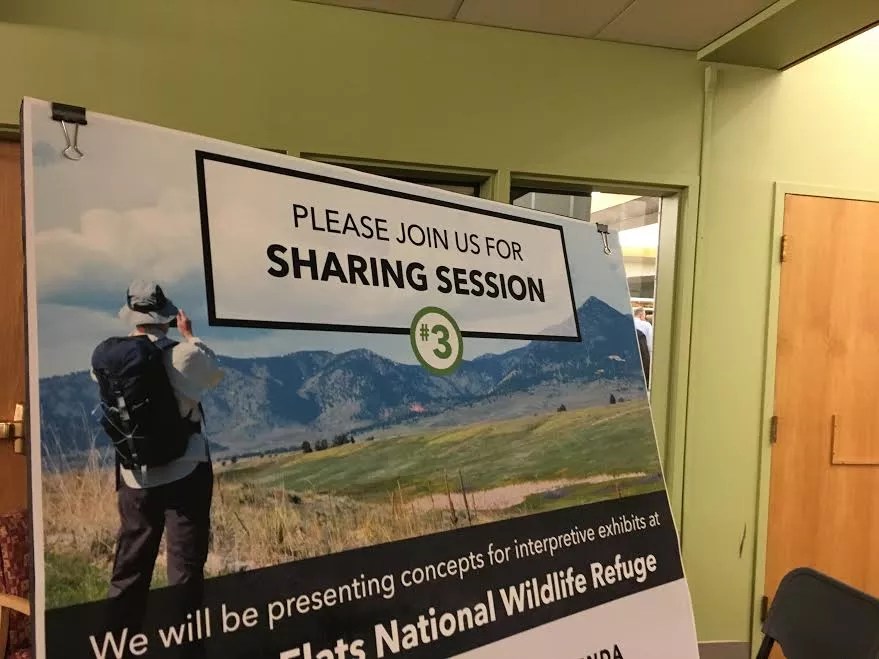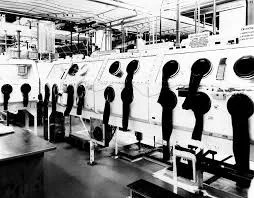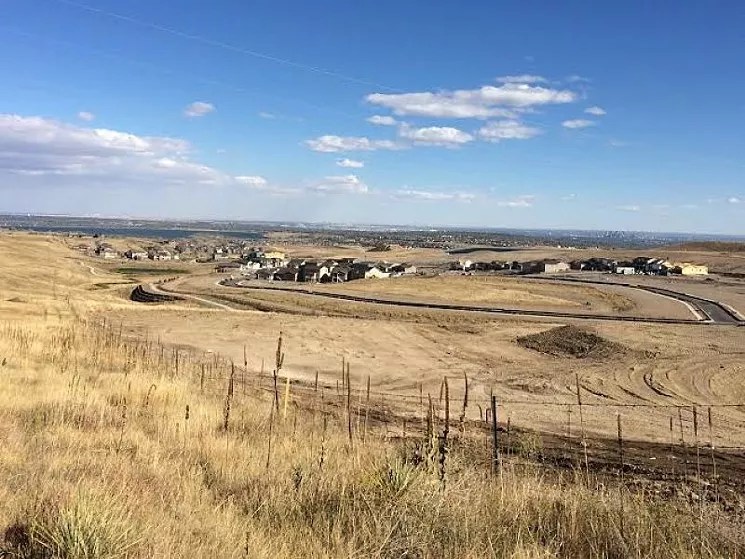
Westword

Audio By Carbonatix
Plutonium has a long half-life. So do any discussions about Rocky Flats, a nuclear-weapons plant located sixteen miles upwind of Denver, which opened in 1952 as a facility dedicated to producing plutonium triggers for bombs.
Over a hundred people gathered at the Broomfield Community Center on Wednesday, February 22, for the third in a series of U.S. Fish and Wildlife Service meetings on plans for what is now the 5,000-acre Rocky Flats National Wildlife Refuge (the Department of Energy retains control of 1,200 acres where most of the plutonium was processed, an off-limits “legacy area”). The last “Sharing Session” discussed the trails that will cross the refuge; this one focused on the progress of the “interpretive exhibits” at the refuge, which could be open to the public as soon as summer 2018.
While others waved signs and occasionally interrupted the series of presentations at what a facilitator had billed as a “civil and respectful” session, A.S. “Murph” Widdowfield sat quietly in the audience. An Army veteran whose company was a contractor at Rocky Flats dealing with the power plant, incinerators and ductwork before the facility closed for good in 1993, he could have answered just about any question anyone had about Rocky Flats.
Today Widdowfield is the president of the Rocky Flats Cold War Museum, an organization that got its start two decades ago, when former plant workers, activists and academics were worried that the history of the place could be lost. The group incorporated in the summer of 2001 as the RFCWM, twelve years after the FBI raided Rocky Flats for evidence of alleged environmental crimes, and six months before the Rocky Flats National Wildlife Refuge Act was signed on December 28, 2001. The act laid out the steps for when the facility, then in the middle of a $7 billion Superfund cleanup, would be transferred from the DOE to Fish and Wildlife. Among the provisions included in that act: “To commemorate the contribution that Rocky Flats and its worker force provided to winning the Cold War and the impact that such contribution has had on the nearby communities and the State of Colorado, the secretary may establish the Rocky Flats Museum.”

Rocky Flats Nuclear Weapons Plant in its heyday.
Department of Energy
Taking that as its mission, the RFCWM continued collecting documents and items from the plant, storing them in temporary facilities, occasionally hosting exhibits. And in 2006, with the cleanup coming to a close, the museum’s then-president sent a letter to the DOE official overseeing the Rocky Flats site, proposing that “the DOE help fund and develop the museum as an ‘interpretive center’ that becomes an integral part of the proposed remedy itself.” The RFCWM envisioned a place not unlike the Atomic Testing Museum in Las Vegas, which commemorates the Nevada Test site, but with more focus on the land itself, from prehistoric days through the ranching era and on through the federal government’s pick of the site for a nuclear-weapons plant in 1951 – a decision hailed as “good news today” in a Rocky Mountain News headline – to “the story of clean-up and related remedial strategies and monitoring efforts designed to protect the long-term health and environment of the area.”
And what did the Fish and Wildlife team outline last night? “A multi-use building” that would “help tell the story” of Rocky Flats, but also provide public bathrooms. The plans make no mention of a museum, and do not even use the words “visitors’ center” – but there will be a 1,200-square-foot exhibit area. Will the exhibit include a discussion of plutonium? Yes. Will it include the opposition to the plant? Yes. Will it discuss hazards? That’s a question for the fourth Sharing Session,”which will be devoted to discussion of risk. (And that one should be a doozy, since many scientists and activists do not believe Rocky Flats should ever be opened to the public.)
Will the exhibit incorporate the RFCWM plan? “The DOE told us to get our nose out,” says Widdowfield. “We’ve been slapped on the cheeks.”

Glove boxes for handling plutonium.
DOE
The museum’s boardmembers have already shared some of their collection with Fish and Wildlife; plans call for the exhibit area to display two of the glove boxes that Rocky Flats workers used to handle plutonium, so that kids will be able to get their hands dirty (but not as dirty as the workers who had to be decontaminated when there were accidents, or worse, with the gloves). But given limited space in the multi-use building, Fish and Wildlife returned most of the items, and they remain stashed away – some at the Arvada Center, where the RFCWM has a small space, and the rest in storage units that museum boardmembers subsidize as they press on with their project.
They want the full story of Rocky Flats to be told – someday, somewhere.
The design of the “multi-use building” itself got good reviews from the audience; the structure fits into the starkly lovely landscape that’s home to lots of wildlife (six kinds of bats!) and tall-grass prairie. As Fish and Wildlife’s Dave Lucas reminded the group at the start of the meeting, the refuge will be “open to the public for a variety of wildlife-dependent recreation,” and in Fish and Wildlife’s world, “wildlife will prevail.” The structure is located on the north side, near Highway 128, rather than by the old plant entrance on the west, where the RFCWM pushed for a museum a decade ago. The building’s doors are on the south, because the wind comes from the northwest at Rocky Flats.
And from there blows sixteen miles straight to Denver.

On the south end of Rocky Flats, trails will overlook this Candelas development.
Westword